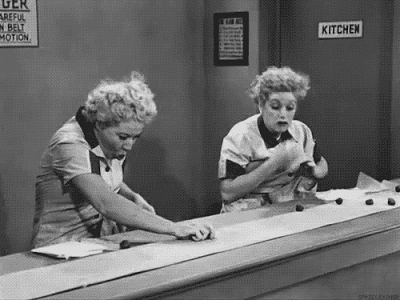by Hubert Marleau, Market Economist, Palos Management
August 18, 2023
The yield on the 5-year U.S. Treasury note, the true approximation of the neutral rate, settled at 4.40% on Friday, marking the highest close since June 2008. The neutral rate is elusive but determinant in estimating whether the Fed’s policy rate is too high or too low to keep the economy in an acceptable equilibrium, that's neither hot nor cold. I prefer a market-based estimate of the neutral rate over academic ones because the former tends to incorporate perceptions of demographics, inflation and productivity quicker and perhaps more accurately than the later.
This rise in yields has forced all investors to reflect on what is going on. On the one hand, the bulls paused to reconsider their stance, wanting reassurance that a prospective outlook for growth was justified. On the other hand, the bears’ views were reinforced by the Fed’s general belief that further interest rate increases might be needed because there are still significant upside risks to inflation. This kind of thinking has been going on since July 25, when the S&P 500 touched the recent high of 4592.
The strong economy does not carry a concomitant risk of a second inflation wave. Indeed, about 98% of the 40 bps rise in yield on 5-year notes is attributable to higher real rates, which have risen from 1.83% to 2.22%. It shows that there has not been any increase in inflationary expectations, being very steady around 2.2%.
Thus the important question to ask is what has caused this rise in real rates to happen. It's either because the prospects for higher growth are great or that more compensation is required for bearing the risk of holding on to a 5-year bond. I’m in the camp of higher growth (stemming from a mini-productivity boom with little chance of an imminent recession).
The Atlanta Fed’s GDPNow tracker - a model designed to give real-time estimates of real economic activity - is pointing to a whopping annual rate of change of 5.8%,with a 11.4 % increase in private domestic investment. The economy is strong. The macro economic surprise index, which rises when prints beat consensus expectations, is at 79, which is the highest point since 2021. Bearing in mind that employment growth has and is clearly moderating, productivity accounts for the bulk of the increase in R-GDP. The Labour Department reported a huge 3.7% step up productivity in Q1, and a similar increase seems very likely for Q3. Meanwhile, the NY Fed’s Outlook-at Risk shows unequivocally that the downside risks to real GDP growth are at historically normal levels, standing at about 16% over the next 4 quarters.
For the first time since the mid-1990s, we are getting an unexpected economic boost, with macroeconomic consequences that could be transformative. Slice this anyway you want, growth that comes strictly from the supply side is not inflationary. In this connection, it is entirely plausible that monetary and financial conditions are restrictive enough to push inflation lower, making it unnecessary for the Fed to raise interest rates beyond where they are now. For the first time in 18 months, a difference of opinion between the hawks and the doves is widening as controversy over the intensity of inflationary pressure is emerging in the press. Headline and core CPI inflation rates, excluding shelter, on a year-over-year basis fell to 2.0% and 2.5% in July, with shelter inflation undoubtedly falling in the coming months. The August core CPI will be a close call between a 0.1% and a 0.2% on the month-to-month print. Incidentally, the swap market is predicting that in one year's time the year-over-year increase in the consumer price will be 1.5%.
Meanwhile, the S&P 500 is down almost 5.0% from the recent high of 4592 registered on July 25 of 2023. The drop has occurred not because of the rise in nominal bond yields. The culprit is the negative narrative surrounding China whose economy is deteriorating so swiftly that investors fear the risk of a more rapid slowdown than the possibility of a quick recovery. It may explain why stock selling has been very orderly. The negativism is abroad. We might be witnessing a short-term pullback, especially if bond yields are at a cyclical peak. History shows that long-term Treasury yields usually peak a few months after the last Fed hike in interest rates. I think this happened last month.
If I'm right on this one, precious metals (gold and silver) could do well. However, I prefer silver over gold. The gold/silver ratio is historically attractive at roughly 85x. It may go higher, but if growth were to win as interest rates drop, the ratio could fall, favouring silver. It may be wise to trade out of some gold stocks for some silver ones because reversals when they occur tend to be powerful and quick.
P.S. Next week's commentary may be delayed by a few days. The Jackson Hole Economic Policy Symposium could be a big moment. There is substantial interest in it because there will be open discussion on the 2% inflation target, the neutral rate and in particular on structural shifts in the global economy - matters of concern for investors.
The yield on the 5-year U.S. Treasury note, the true approximation of the neutral rate, settled at 4.40% on Friday, marking the highest close since June 2008. The neutral rate is elusive but determinant in estimating whether the Fed’s policy rate is too high or too low to keep the economy in an acceptable equilibrium, that's neither hot nor cold. I prefer a market-based estimate of the neutral rate over academic ones because the former tends to incorporate perceptions of demographics, inflation and productivity quicker and perhaps more accurately than the later.
This rise in yields has forced all investors to reflect on what is going on. On the one hand, the bulls paused to reconsider their stance, wanting reassurance that a prospective outlook for growth was justified. On the other hand, the bears’ views were reinforced by the Fed’s general belief that further interest rate increases might be needed because there are still significant upside risks to inflation. This kind of thinking has been going on since July 25, when the S&P 500 touched the recent high of 4592.
The strong economy does not carry a concomitant risk of a second inflation wave. Indeed, about 98% of the 40 bps rise in yield on 5-year notes is attributable to higher real rates, which have risen from 1.83% to 2.22%. It shows that there has not been any increase in inflationary expectations, being very steady around 2.2%.
Thus the important question to ask is what has caused this rise in real rates to happen. It's either because the prospects for higher growth are great or that more compensation is required for bearing the risk of holding on to a 5-year bond. I’m in the camp of higher growth (stemming from a mini-productivity boom with little chance of an imminent recession).
The Atlanta Fed’s GDPNow tracker - a model designed to give real-time estimates of real economic activity - is pointing to a whopping annual rate of change of 5.8%,with a 11.4 % increase in private domestic investment. The economy is strong. The macro economic surprise index, which rises when prints beat consensus expectations, is at 79, which is the highest point since 2021. Bearing in mind that employment growth has and is clearly moderating, productivity accounts for the bulk of the increase in R-GDP. The Labour Department reported a huge 3.7% step up productivity in Q1, and a similar increase seems very likely for Q3. Meanwhile, the NY Fed’s Outlook-at Risk shows unequivocally that the downside risks to real GDP growth are at historically normal levels, standing at about 16% over the next 4 quarters.
For the first time since the mid-1990s, we are getting an unexpected economic boost, with macroeconomic consequences that could be transformative. Slice this anyway you want, growth that comes strictly from the supply side is not inflationary. In this connection, it is entirely plausible that monetary and financial conditions are restrictive enough to push inflation lower, making it unnecessary for the Fed to raise interest rates beyond where they are now. For the first time in 18 months, a difference of opinion between the hawks and the doves is widening as controversy over the intensity of inflationary pressure is emerging in the press. Headline and core CPI inflation rates, excluding shelter, on a year-over-year basis fell to 2.0% and 2.5% in July, with shelter inflation undoubtedly falling in the coming months. The August core CPI will be a close call between a 0.1% and a 0.2% on the month-to-month print. Incidentally, the swap market is predicting that in one year's time the year-over-year increase in the consumer price will be 1.5%.
Meanwhile, the S&P 500 is down almost 5.0% from the recent high of 4592 registered on July 25 of 2023. The drop has occurred not because of the rise in nominal bond yields. The culprit is the negative narrative surrounding China whose economy is deteriorating so swiftly that investors fear the risk of a more rapid slowdown than the possibility of a quick recovery. That is why China is set to cut lending rates. It may explain why stock selling has been very orderly. Plus, the negativism is abroad. In this regard, we might be witnessing a short-term pullback, especially if bond yields are at a cyclical peak. History shows that long-term Treasury yields usually peak a few months after the last Fed hike in interest rates. I think this happened last month.
If I'm right on this one, precious metals (gold and silver) could do well. However, I prefer silver over gold. The gold/silver ratio is historically attractive at roughly 85x. It may go higher, but if growth were to win as interest rates drop, the ratio could fall, favouring silver. It may be wise to trade out of some gold stocks for some silver ones because reversals when they occur tend to be powerful and quick.
P.S. Next week's commentary may be delayed by a few days. The Jackson Hole Economic Policy Symposium could be a big moment. There is substantial interest in it because there will be open discussion on the 2% inflation target, the neutral rate and in particular on structural shifts in the global economy - matters of concern for investors.
.
Copyright © Palos Management
















